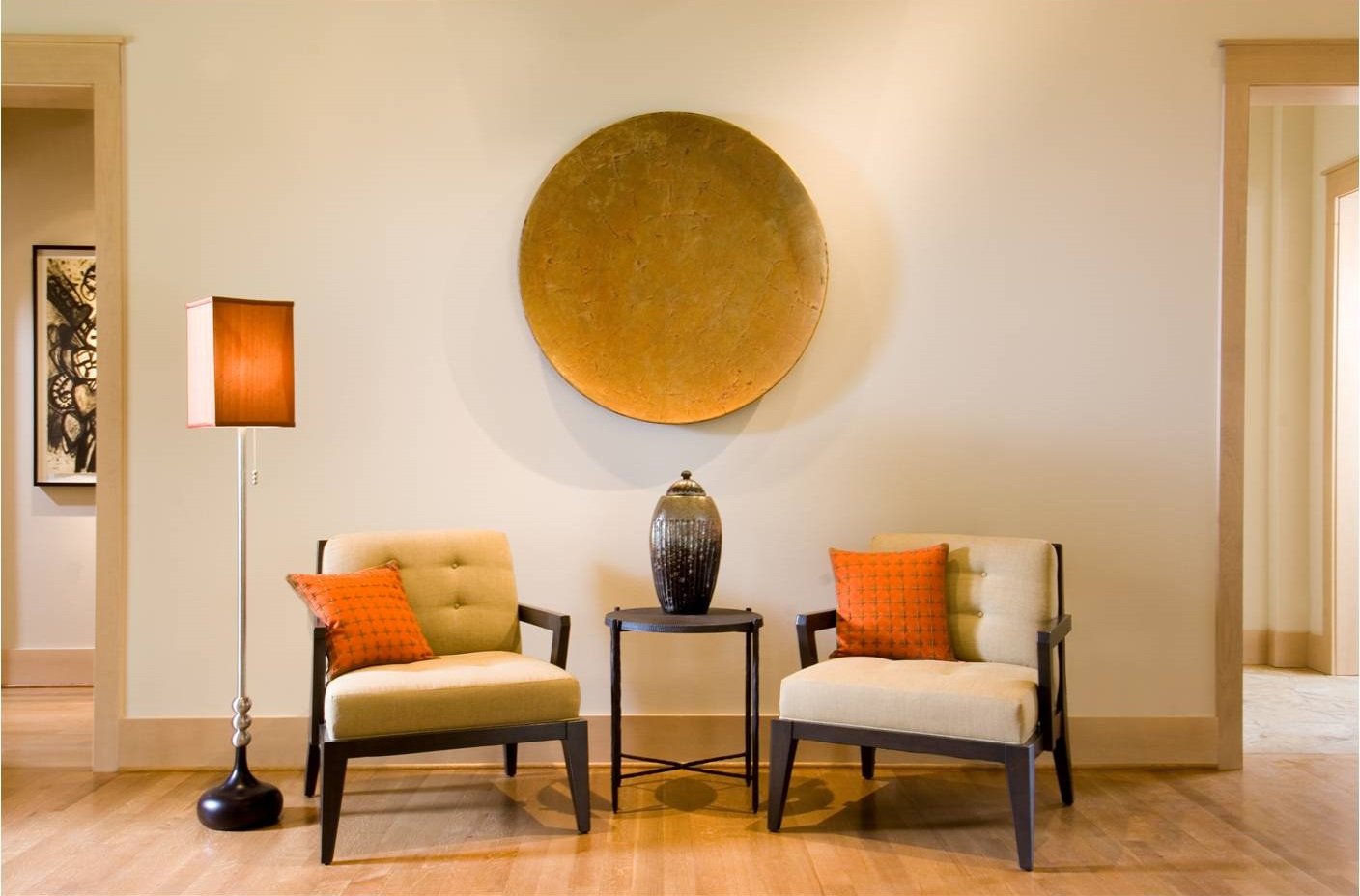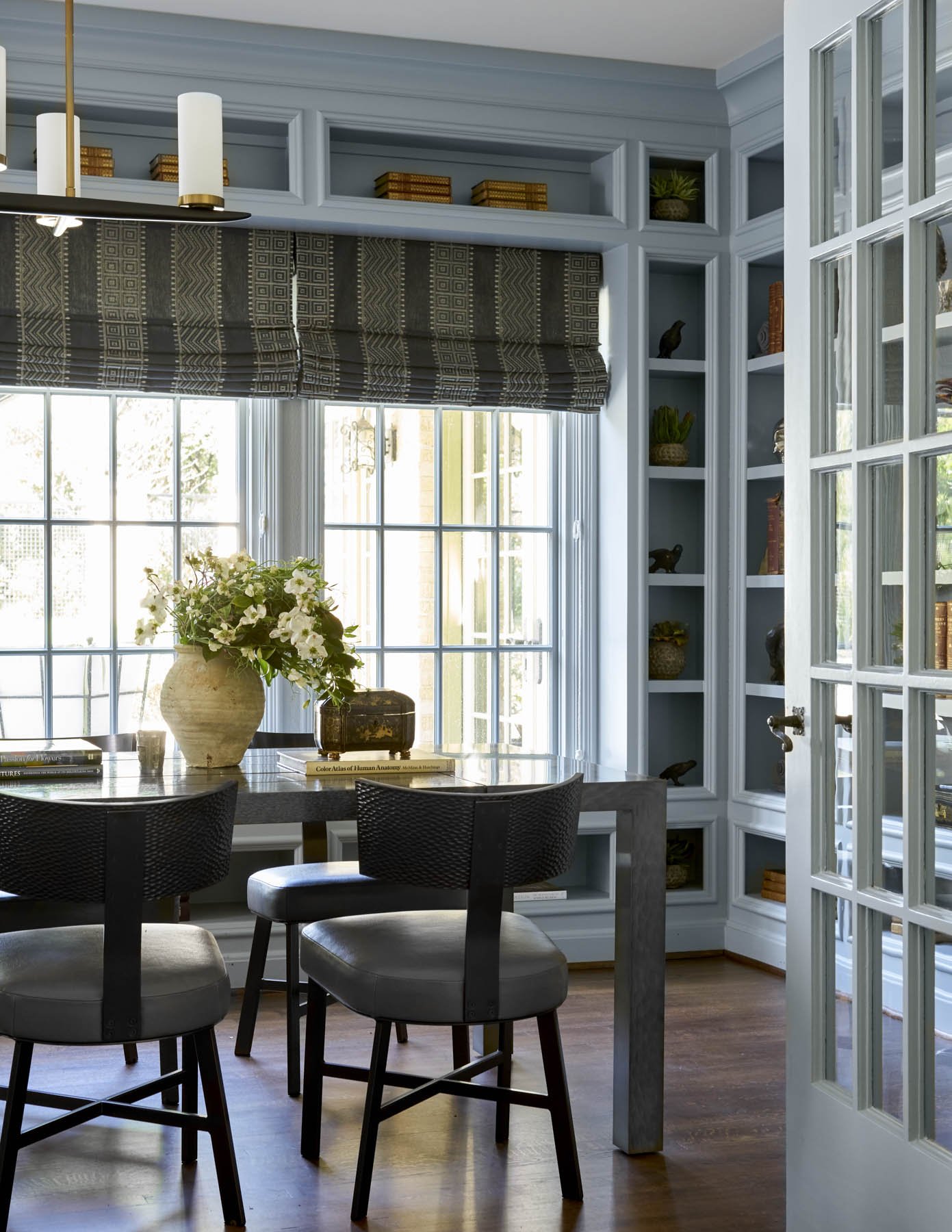The bedside chest in this photo is painted in a neutral wash to balance out the bold oranges in the rest of the room.
Painting is a great way to update old and tired furniture with worn finishes. Painted furniture has been around for hundreds of years, and you can see examples of it in every major interior design style. For example, whitewashed furniture is traditionally used in Sweden to make a room feel brighter during Scandinavia’s dark and dreary winters. In Asia, a lot of antique furniture is painted in a cinnabar color with a high-gloss finish or black lacquer with a little gilding.
That said, with painted furniture, a little goes a long way. Before you pick up a paintbrush, read this design guide for some do’s and don’ts on using painted pieces in a room effectively.
Choosing the Right Color and Finish
Antiqued gold accents on a whitewashed piece of furniture add both dimension and a touch of flair to the piece.
Not all paint colors and finishes are created equal when it comes to furniture. Generally, muted colors are preferable to bright colors: a touch of gray in a color gives it sophistication. Old-fashioned desks or armoires can feel fresh and modern again when painted in an unexpected color, like gray green. Rattan chairs take on a refined air when painted with gray and mixed with modern furniture. However, I personally would never paint a fine antique, especially a piece from the 18th century or older.
At my firm, lately we’ve been lacquering vintage pieces with a high-gloss finish. Sometimes we also whitewash a piece of furniture, then paint the details in a contrasting color or gild them. Metallic paint looks best as subtle accents on painted furniture. With night chests, I like to stain the top and whitewash the bottom. Something to keep in mind is that furniture pieces don’t have to be painted all in one finish.
Mixing and Matching
Many homeowners are afraid to mix furniture with different styles and finishes, but a serious designer will never use a matching set of furniture. The challenge is worth it: in my opinion, rooms are much more interesting when the finishes don’t all match. For example, if you have three painted furniture pieces in a room, you might want to use different shades of the same color. I also like to add stained pieces, which ground the room, in with my painted pieces.
The painted chairs in this Preston Hollow dining room did not come with the table, but still complement it nicely.
On the other hand, using the same paint color for multiple furniture pieces is not a bad idea when you’re bringing together different kinds of chairs in the same seating area. The chairs should ideally be in the same general style and made of similar woods, so that you’ll know that they take paint the same way.
Don’t Rush the Process
The best paint jobs have a lot of prep work put into them. If you’re going to paint your furniture yourself, make sure to sand and prime it well so that the paint won’t chip later.
Also, remember that different types of wood take paint differently. For example, poplar or soft maple yield a smooth finish. Oak plywood is not recommended for painting, as paint or primer will not fill the pores very well.
Use Painted Pieces Sparingly
I only use painted furniture as accent pieces. I would never do a whole room with painted furniture, and the most I would use is three pieces per room. I often like to use a painted bed in my designs and scatter other painted pieces throughout the rest of the house. If you’re not sure whether you want to use one, two, or three painted pieces in a room, try painting just one and living with it for a while.
These leather and cane-back dining chairs, which have painted faux bois frames, are custom designed from The Chambers Collection.
Although painted furniture belongs in any home, no matter the style, it’s tricky for most people to learn how and when to use it. If you would love to extend the life of your vintage pieces but are unsure what finish or paint color would look best, ask an interior designer to look at your collection. This is one of the reasons why people hire interior designers in the first place: combining furniture pieces with different paint colors, wood types, and finishes is a skill that takes years of experience to master. You can schedule a free consultation with us by calling our Dallas office at 214-651-7665 or emailing us at info@chambersinteriors.com.

















